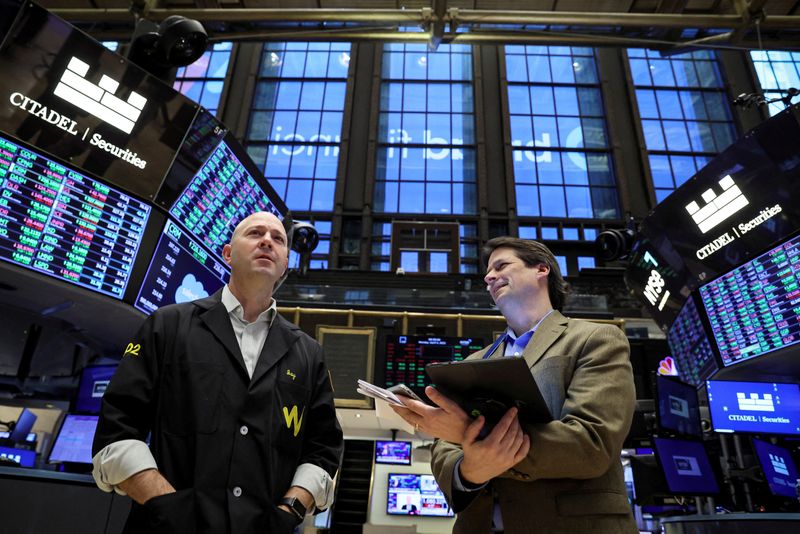This post was originally published on this site

The Dow Jones Industrial Average was 0.1%, or 56 points lower, the Nasdaq fell 0.6%, and the S&P 500 was down 0.5%.
PayPal Holdings Inc (NASDAQ:PYPL) slumped more than 12% as the payments company cut its annual transaction margin guidance amid efforts to ramp up its lower margin unbranded business, led by its Braintree processing platform.
The softer outlook on margin growth offset quarterly results that topped Wall Street estimates on both the top and bottom lines.
Still, further efforts to cut costs over the next year “should help offset the pressure from unbranded volume growth outpacing branded volume growth,” RBC said in a note.
Semiconductor stocks were also a big drag on the broader tech sector following a more than 5% slump in Skyworks Solutions (NASDAQ:SWKS) after the chipmaker’s guidance for the third quarter fell short of estimates amid weaker Smartphone demand.
Also weighing on chip stocks, Western Digital Corporation (NASDAQ:WDC) dropped 2% following guidance and quarterly results that beat analyst estimates.
Palantir Technologies (NYSE:PLTR), however, was the standout performer, rallying more than 23% after the data analytics company reported better-than-expected first-quarter results and said it expected to generate a profit in each quarter this year.
Despite Palantir’s quarterly earnings beat, some on Wall Street remain on the sidelines, citing concerns about new government contracts.
Given the possibility for disruptions in the U.S. Government segment from “continuing resolution and/or debt ceiling negotiations, we await a better entry point,” Goldman Sachs said in a note.
Regional banks recovered lost ground from a day earlier as PacWest Bancorp (NASDAQ:PACW) climbed 2%, though concerns about the sector persist.
Boeing Co (NYSE:BA), a major Dow component, was up more than 2% after winning an order to deliver 737 Max jets, worth $40 billion from Ryanair.
On the political front, President Joe Biden and Republican lawmakers are set to kick off talks aimed at breaking the deadlock on debt ceiling negotiations needed to raise the Federal borrowing limit and stave off a U.S. default.
The debt limit for the U.S. is currently capped at $31.4 trillion, Stifel says, but following “massive amounts of annual federal spending, U.S. government commitments have surpassed that level prompting the need for additional debt issuance beyond the current limitation.”
The ongoing sluggishness in markets comes just a day ahead of April’s consumer price index, due Wednesday, that economists expect to show an uptick in inflation for the month.

